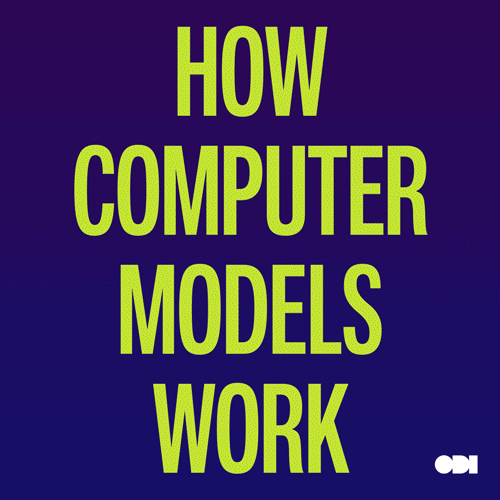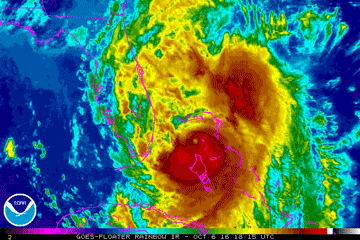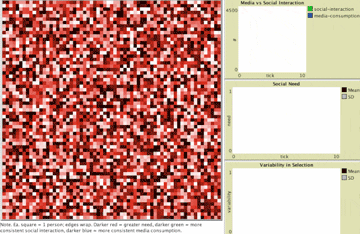
This article has been written by Joe Paul, a Science Communications student from Imperial College London. Joe has been working with the ODI over the last couple of months. — Computer models have been thrown into the spotlight by their important role in informing governments’ responses to Covid-19. However, computer models have already been used for decades in fields as diverse as climate change forecasting, economic analysis and engineering. But what are they? How do they work? Are they reliable? The increasing role of computer models in business and public policy makes broader understanding of what computer models are – as well as the role they play in policymaking – more important. So, as part of the Open Data Institute’s (ODI’s) work surrounding Covid-19, we have produced this explainer to clear up doubts and questions.
What is a model?
The world is messy, complicated and hard to understand. Models are systems created to imitate parts of the real world; systems which can be understood, manipulated and examined more easily. If these systems are well designed, we can learn more about the real world by studying them. Modellers can use many different methods to imitate the real world. For example, a model can be physical – like a model of a plane in a wind tunnel that simulates how air will pass over a real plane’s wings, or an artist’s wooden mannequin used to judge body proportions when they don’t have a human model to work with. Importantly, models are not the real world, but simplified versions of it that only focus on the things we want to study in a given situation. These simplifications mean that a model will be missing some details, or will have additional distortions that must be well-understood in order to use the model properly. However, models can be incredibly powerful tools to be used alongside others to aid thinking and guide decision making.
What is a mathematical model?
In a mathematical model, the language and logic of maths is used to describe aspects of a real-world system. For example, a cyclist could use a pen and paper to make a simple model of one of their journeys. By taking the distance of their journey and dividing that by their predicted speed, they could work out how long it would take them. For a simple journey over flat, even ground and without stopping, that would be easy enough. However, a more realistic model would need to take into account things like traffic, the weather, terrain, fatigue, or the potential for punctures. Although it is still possible to describe all of these various things with maths, it would be quite difficult to work through the now-rather-complicated model to come out with a predicted journey time. In situations like this, where the mathematics is very complex and takes a long time to work through, we can write the maths into computer code and let computers run through the working for us. The ability of modellers to describe complex situations using maths means that we can make computer models to explore situations that are impractical or impossible to physically explore, such as the weather in a few day’s time, the climate many thousands of years ago, or the behaviour of a medicine inside the human body.
How do computer models work?
Normally, to understand the world around us, our senses supply observations to our brains, and our brains filter and digest these observations to build an understanding of what’s going on. Computational models work in much the same way. The first step is to choose a set of variables with which to describe your chosen real-world system. For example, weather forecasters have developed a set of sensors that translate the weather as we experience it into a set of numbers that computers can understand. These numbers will correspond to things like temperature, humidity, wind speed and rainfall. For computer models that simulate economies, measures like the average prices of household goods, unemployment levels and interest rates may be used. Once the data is collected, it can be fed into your computer model, which digests the data by passing it through a series of mathematical operations. These operations are controlled with computer code. The operations will churn out a new set of numbers (your output data), which you can interpret as describing a different state of the real-world system, for example, the weather in two days’ time.

What are models used for?
There are a huge number of diverse uses for computational models. Here, I will only discuss three broad uses for models – forecasting, exploring and explaining – based on the categorisation used in a Society Pages article by Jimi Adams.
- Forecasting may be the most commonly-seen use of computational models – we take a set of measurements from the real world, feed them into a model, and the model will give us a new set of numbers that predicts what the world will look like in the future. This sort of modelling is used routinely in weather forecasting (what will the weather be like tomorrow?), economic predictions (what will unemployment rates be in six months?), or in structural maintenance (when will we need to replace this particular component?). These models tend to work best when applied to stable, relatively well-understood situations, and reliance on them in new, unseen situations can be controversial (for example, the modelling used to assign grades to students in England in the absence of exams due to Covid-19 came under heavy criticism).

- Models can be used to explore situations that are impractical or impossible to explore in the real world. An example of this is the use of models in predicting the course of a pandemic. Frequently, the first situation to be modelled is a ‘do-nothing’ scenario, where the severity of the pandemic is predicted under the condition that governments take no mitigating action. Modellers will then run the model several times under different conditions – for example, by including the effect of school closures or the banning of large gatherings – to see what effect these interventions have on the disease’s spread. These predictions may not be totally accurate, but the results from different conditions can be compared with each other to inform policymakers on what actions may be better or worse.

- Models can also be used to explain events in the past. In this situation, we create models that try to imitate a real-world process that we do not understand. A model that can reproduce events from the past can inform our understanding of what caused those events. For example, in understanding the asteroid strike that led to the demise of the dinosaurs, or how early humans interacted with neanderthals.

How reliable are computational models?
Every model is created for a unique purpose, and will function in a bespoke way to suit that purpose. Some models are made to give forecasts that are as accurate as possible, attempting to produce a near-mirror image of some aspect of the real world. Such models are used routinely to give reliable weather forecasts around the world. Other models are not meant to give an accurate reflection of the real world, but to explore ideas and possible scenarios. They may be designed to aid thinking alongside other tools, rather than relied upon to give accurate predictions. However, this kind of subtlety is sometimes lost as a model’s outputs filter through to newspaper headlines, Twitter feeds and policy advocates’ arguments. As such, when you see a model’s outputs being quoted in support of something, it may be worth doing some background reading about the model being quoted. For example, is this a forecast, or has the model produced several different predictions based on different scenarios? When properly used, computational modelling is an enormously powerful technique that provides deep, reliable insights into complex problems. As models become more powerful, their role in informing decisions in business and public policy will only grow, so increased transparency is becoming more important as part of public accountability. Likewise, increased sharing helps build wider knowledge and skills in modelling, as well as building trust between those using models and those affected by them.